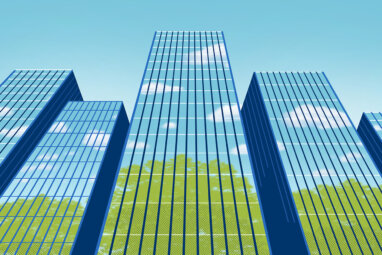Starbucks Cups, Sustainability, MIT’s Senge and You
 Will we ever come to bury the single-use paper cup?
Will we ever come to bury the single-use paper cup?
Environmentalists of all stripes feel some combination of guilt, confusion, and even indifference when they stop to think about paper cups. Many times those cups are used for less than a minute before they enter the long cycle of becoming either landfill waste, pulp that’s recycled into a new material or compost.
The question is a particular headache for Starbucks. According to author Anya Kamenetz, “an astonishing 3 billion of the nation’s 200 billion-plus paper cups thrown into dumps each year bear that familiar green logo.” Jim Hanna, Starbucks’ director of environmental impact, tells Kamenetz that, “From our customers’ standpoint, the cup is our No. 1 environmental liability. . .Cups are our icon, our billboard, part of the ethos of the company. Customers have this great experience of interacting with store partners and the beverage. Then, when they’re finished, they say, ‘Now what do I do with my cup?’”
Kamenetz digs into that mass of waste in the November 2010 issue of Fast Company. Subtitled “A story of Starbucks and the limits of corporate sustainability,” her piece, “The Starbucks Cup Dilemma,” explains that the company has enlisted MIT Sloan’s Peter Senge to help it tackle the issue: “With Senge’s help, Starbucks has moved from solo redesign efforts to enlisting paper mills, NGOs, municipal governments, and even competitors such as McDonald’s and Dunkin’ Donuts to help.”
Kamenetz continues: “Starbucks is putting major marketing muscle behind the effort, too, betting that despite the economic downturn customers will be drawn to the green halo of its so-called Shared Planet initiative.”
All good news? Not so fast. “Casting the company as an innovative, dedicated leader in sustainability has its risks,” Kamenetz writes. “Getting more cups out of the waste stream and into places like [composter] Cedar Grove has proven to be a lot more complicated than anyone at Starbucks had expected, and some environmentalists are actively questioning the company’s approach. . . The saga of the Starbucks cup may represent the last stand for the era of the corporate-led sustainability initiative. Think about it: What would it take for you to never throw away another cup?”
“At many annual meetings,” Senge says in the story, “people would stand up and say, ‘What are you going to do about this goddamned cup?’ Howard [Schultz, Starbucks CEO]’s an off-the-cuff kind of guy, so he basically ordered his team, ‘We’ve got to get rid of this disposable cup. Go solve the problem.’” In October 2008, Schultz pledged that 100% of Starbucks cups would be recyclable by 2012.
But what did that mean? Compostable and biodegradable? Collected and then turned into something else? And how do you get customers to not just throw the cup in a trash can, where it will just turn into landfill waste?
Kamenetz’s story details Starbucks’ efforts to try out different materials and different “cup recovery” efforts. It held a “Cup Summit” at the MIT Media Lab on Earth Day, last April (see MIT SMR’s blog post about the event). There, a pilot project was launched to turn used cups into napkins.
Kamenetz’s conclusion? First, “Starbucks’s true strategy might be best stated as doing the most that can be done for the environment both voluntarily and at a profit. ‘Our goal is to prove that there’s a market value for our cup stock, and for the recycling community and paper manufacturers to see monetary value in that,’ says [Starbucks’ director of environmental impact] Hanna. ‘We need to balance business with environmental performance.’ That may be the most we can expect from any corporation.”
Her second conclusion: “Bring your own damn cup.”





Comments (4)
Sarah Milard
maria troya
Aaron Martirano
Eli Mueller